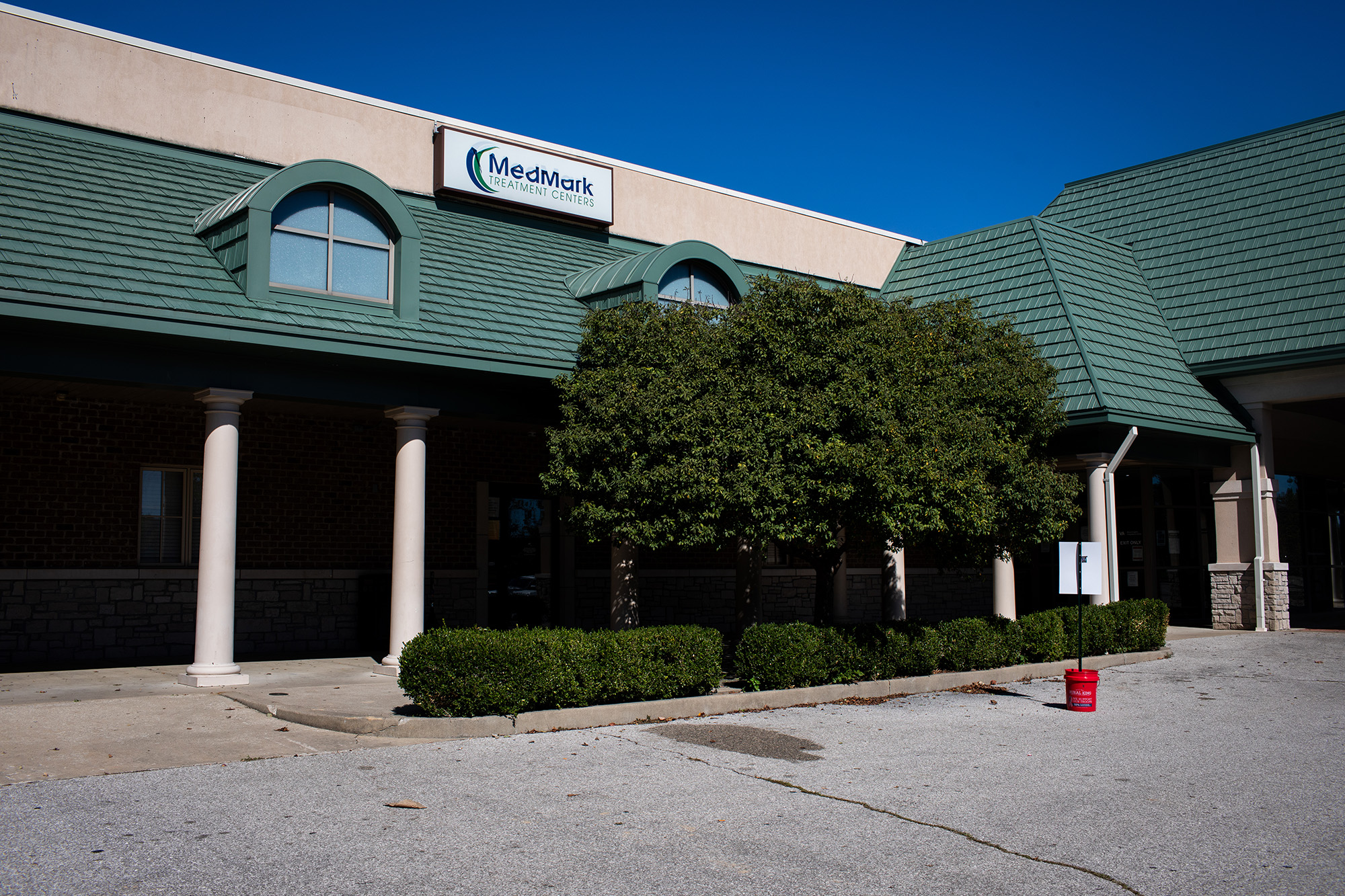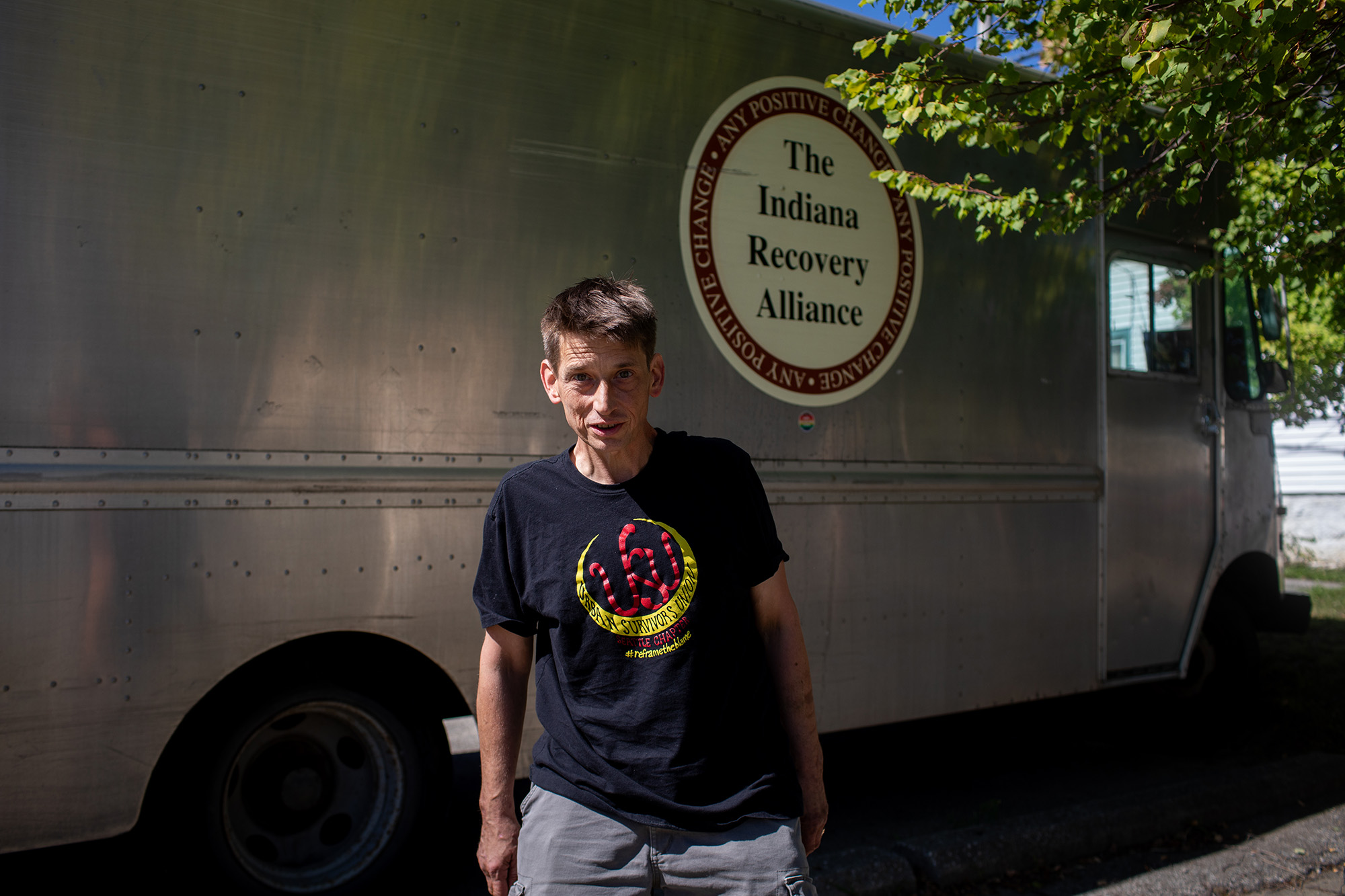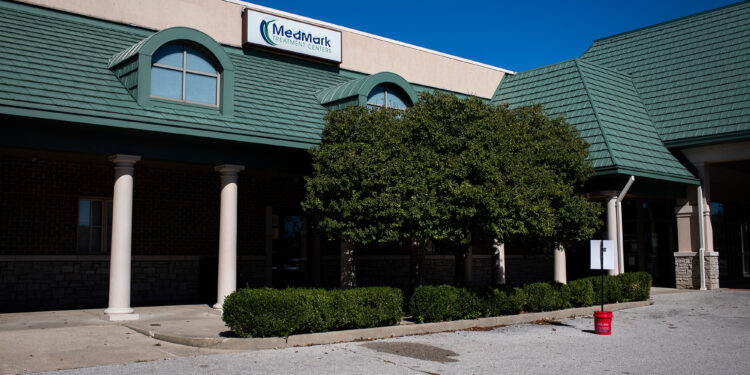Every morning, Nick Voyles jumps in his car and hustles to a methadone clinic in a nearby strip mall. As he walks up to the glass partition that separates him from the nurse—and his daily dose of America’s most regulated drug—his mind starts racing: What if this takes forever and I’m late for work? What if I can’t pee while I’m being watched? “I’m scared the entire time,” he says. “I’m called to the window and I’m just waiting to see what will happen.”
For Voyles, the executive director of the Indiana Recovery Alliance, a harm-reduction organization based in Bloomington, methadone has been a lifesaver and a stabilizer. “I bought a house. I married the woman I love,” Voyles told me on a rainy day as we sat on mismatched couches in the group’s office. “I raised a child. I’ve got a career.”
Despite well-established benefits—it reduces overdose deaths by as much as 59 percent—and low risks, methadone is the only prescription drug that doctors cannot call into a pharmacy and is solely available through segregated clinics. Unless they’re granted the “privilege” of take-home doses, people have to travel to the clinic every day or risk going into withdrawal. In the 30 years Voyles has been on methadone, he’s missed many Christmases with his family in Texas. Since he couldn’t get take-homes, he wasn’t at his mother’s bedside when she was diagnosed with cancer. He’s driven to clinics an hour away and shown up two minutes after dosing hours have ended to be turned away at the door.
The crisis gave new life to a movement of drug user organizers, providers, and researchers pushing to “liberate methadone” from clinics.
The immense difference methadone makes in people’s lives, and the humiliating and punitive way in which it’s administered, have made the clinics a longtime target of the National Survivors Union, a group of current and former drug users pushing to change a system they say has failed them. Voyles got involved with the NSU around 2019, after he heard a member speak at a conference. “I didn’t know that there was a group of people that was willing to go out in public and say, ‘We’re drug users, and we want our rights back,’” he says.
The NSU long hoped to push regulatory changes for methadone, but standing in the way was the Substance Abuse and Mental Health Services Administration, which hadn’t substantively modified its rules governing opioid treatment since they were first imposed in the early 1970s. As soon as Covid hit, that changed. When social distancing rules were put in place in March 2020, SAMHSA released emergency guidelines to ease take-home access. But at many clinics, take-homes continued to be few and far between. “It was a radicalizing moment,” says NSU member Caty Simon. “We thought that so many of the people in our communities would be spared the risk of transmission inside clinics—and were quickly and devastatingly proved wrong.”
At the same time—partly as the result of Covid-related supply chain interruptions—North America’s illicit drug supply was increasingly tainted by fentanyl. According to the CDC, opioid overdose deaths increased by 38 percent in 2020. To activists like Voyles and Simon, it was clear their friends and loved ones were dying because it was harder to access methadone than the lethal drug supply. The crisis gave new life to a movement of drug user organizers, providers, and researchers pushing to “liberate methadone” from clinics. In February 2024, NSU organizers secured a major victory when SAMHSA made its emergency rules from Covid permanent.
But to the activists, the pandemic exposed how even those reforms fell short. To achieve the broader changes they want—to abolish the clinic system, they say, and not just reduce its cruelty—they will have to overcome a lobbying push from clinic owners. Twenty years ago, most clinics were operated by nonprofits or state and tribal governments. Today, about 65 percent are for-profit, with almost a third backed by private equity. The shift has surprising roots: By requiring insurers to cover treatment for addiction services, legislative reforms like the Affordable Care Act expanded the pool of people able to access treatment. Private equity firms “saw a lot of growth opportunity,” says Eileen O’Grady, a researcher at the Private Equity Stakeholder Project. Six PE-backed chains now each own 50 or more clinics, and two firms own 100 or more, according to a recent investigation by Stat.

Voyles’ clinic is operated by BayMark Health Services, which is owned by two PE firms. Since his clinic was taken over by the chain, he’s noticed significant cuts to administrative and janitorial workers, increasing the burden on a dwindling staff. BayMark insists cuts are not “standard practice” and argues private equity investment has allowed the company to “expand access and improve care” across its 113 clinics. But sprawling and opaque clinic networks make it difficult for activists and researchers to definitively say how private equity has affected patient care—for example, whether these clinics are more likely to “fee-tox,” or forcibly discharge patients who cannot pay.
At the same time, a growing body of research shows that when private equity and health care collide, patient outcomes get worse. A December 2023 study published in jama found that after hospitals were acquired by private equity, patient falls, infections, and other postprocedure complications increased. Private equity–backed companies “must have outsized profits, and if they don’t, they’ll lose their investors,” says Laura Olson, a Lehigh University political science professor who has studied the industry’s effect on health care. “The only way to get outsized profits is to cut services.”
Rep. Donald Norcross (D-N.J.) remembers looking out the window of his Camden apartment during a snowstorm to see people still forced to trek to a nearby methadone clinic. “Everybody else’s sheltering in place. And these people are coming out in horrible conditions,” Norcross recalls. He started asking questions and was shocked to discover the monopolistic control leveraged by the clinic chains.
In 2021, Norcross started drafting a bill to expand methadone access—and challenge the industry’s status quo, in which operators make money by requiring frequent on-site visits. At first, he told me, he attempted to include clinics and industry representatives in the process. But “they kept moving the goal posts,” he said. “It was clear they didn’t want any changes because it would hurt their business.”

The trade industry group representing methadone clinics, the American Association for the Treatment of Opioid Dependence, as well as several private equity–backed clinics, retained lobbying services for the first time in 2022, according to Stat. The same year, AATOD—alongside BayMark and other private equity–backed providers—launched its “Program, not a Pill” PR effort to make the case that clinics provide valuable wraparound services beyond methadone itself.
In March 2023, Norcross and a bipartisan group in Congress introduced the Modernizing Opioid Treatment Access bill, which would allow pharmacies to dispense methadone and board-certified addiction physicians to prescribe it. For many activists, it’s an important step, even as they push to make the drug available through primary care providers. “It’s the most achievable incrementable change that we can aspire to,” Simon says.
In an interview, AATOD President Mark Parrino said the existing clinic system keeps patients safe. “While methadone maintenance is a very good medication in treating opiate use disorder, it’s an unforgiving medication,” he said. “If you don’t have experience using it, people will overdose.”
While overdosing on methadone is possible, several studies conducted during the pandemic found that greater access to take-homes did not increase overdoses or lead patients to drop out of treatment. Many countries, including Canada and the United Kingdom, allow physicians to prescribe methadone and pharmacies to dispense it, while reporting few safety risks and a far lower rate of overdose.
A version of Norcross’ bill passed the Senate health committee in late 2023, but went no further in the last Congress. In March 2024, Sen. Edward Markey (D-Mass.) opened a bipartisan investigation with several of the bill’s co-sponsors into whether private equity was hampering methadone access. “It’s clear that private equity investors want to keep methadone locked in methadone clinics to make money instead of save lives,” he told me in an email.

While the bipartisan attention and broad impact of the opioid crisis could transcend political gravity, advocates are not optimistic about Norcross’ bill under President Donald Trump, who is fixated on blaming Mexico for the overdose crisis.
Meanwhile, Voyles continues to drive to his clinic each day, familiar questions racing through his head. “You have no control over anything,” he says, “and anything could happen.”






